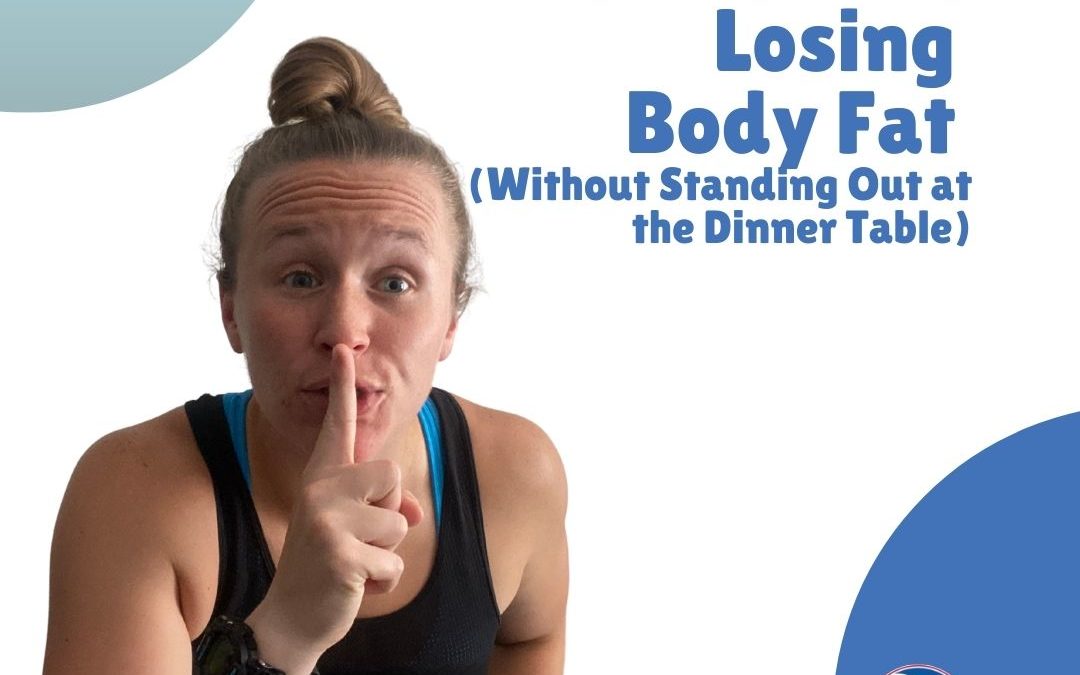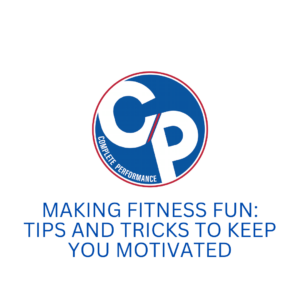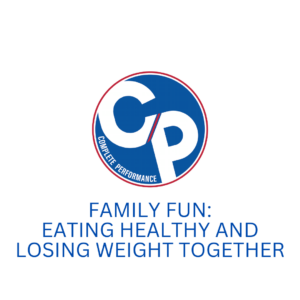What’s one of the biggest fears about changing your diet?
Standing out at the dinner table.
Yep, it’s not what to eat or how to change…
At this point, with everything out there about nutrition and fat loss, these things are almost common knowledge.
It’s the attention and temptation.
And do you know what, IT’S A SCARY THING!
So, what can we do to avoid all the stress? Or how can we avoid standing out altogether?
Here are 7 Simple Tips to Avoid Standing Out at the Dinner Table:
#1 Check in with Yourself
Hmm, when’s the last time you did that?
I’m not even talking about before dinner, but in life in general.
For most of us, it’s been a while, which is why it’s really important you start doing this is really going to be the time you lose the weight.
Check in with yourself before you jump in to loading up your plate, gathering around the table, and filling yourself up.
It doesn’t need to be a 30-minute meditation, but just do a little rating of things like:
- Your Hunger Levels
- Your Stress Levels
- Your Cravings
- How Your Body Feels (Recovery-wise)
- What you have coming up in the next 24-48 hours.
In many cases, overdoing it at the dinner table can be completely avoided if we stop for a quick little inventory.
It brings you back into the present moment, clears your head so you can make the best possible choice, and gives you the ability to give your body exactly what it needs.
This may not ACTUALLY change what goes on your plate, but it prevents you from standing out because you’re giving your body exactly what it needs. You’re not the Big Eater at the table because you’ve become aware of your stress and hunger levels. You’re also not skimping yourself with a bite-sized plate of food because you’re holding on to previous decisions made.
#2 Pack Your Plate (The Right Way)
Now, we’re getting into the make-up of your plate. The thing that really scares people about sitting down for family dinner.
The traditional American diet is FILLED with low-quality, highly processed carbs and fats, which is a big reason why obesity has become of grave concern.
If you’re serious about losing the weight and changing your diet, you need to adjust how you pack your plate.
Protein First
Protein is the most satiating nutrient, which means it’s going to fill you up and help prevent over-eating. It also has the highest thermic effect of food (TEF), which means you’re simply going to burn MORE calories by eating MORE.
While you may not be able to physically put protein on your plate first, identify it first and save 1/3 of your plate for a serving of protein.
Veggies Second
Next, we’re adding veggies to the protein.
Protein is satiating and veggies are filling. This means you’re not only giving yourself the sensation of fullness, but you’re filling up the space inside your stomach to send an even stronger sensation of fullness.
Not to mention, vegetables are LOADED with micronutrients, and when we’re appropriately filled up on those, we can prevent all cravings and stressed-out binge eating sessions.
Be sure you fill 1/3 to 2/3 of your plate with veggies.
Whatever Else
Yes, I know there’s not a whole lot of space left, but that’s kind of the point.
Fill it with your cheesy potatoes, fries, or whatever other side is out there that you don’t want to get caught passing up on.
Your goal is to eat 80% high quality, minimally processed foods; therefore, your plate is perfectly set up to fulfill that based on the remaining space.
What happens if someone notices you took a bigger helping of protein or veggies?
“Oh, I just really like _______.”
“Yea, I guess I really packed in on there, huh?”
You don’t need to make a big deal about it, so just play it off like you’re excited about the food that is on your plate.
#3 Make Small Changes
Never once has anyone said you need to make big radical changes all at once.
In fact, often, that’s just an expectation or pressure you’ve put onto yourself…
(Don’t worry, I’m more than guilty of that as well)
Start small.
Gradually change things over time, so 1) it’s less noticeable, and 2) you actually give yourself a chance to stick to it for life.
When I started my journey, I was still living at home with mom and dad paying the grocery bill. I was afraid to start suddenly asking for all these different food items because I was hellbent on doing this without anyone ever knowing (NOT recommended). The changes to the grocery list were small – we’re talking 1 or 2 items different and not too far off from what we’d typically have on the list. Here are some of the small changes I made:
White Pasta –> Whole Grain Pasta –> Quinoa & Rice
This was a VERY slow transition because I was your Pasta Girl through and through, but the best part is that I never changed portion sizes until I started eating more quinoa and rice. I allowed my body and mind to get used to this change, and nobody (including myself) made a fuss.
1 New Thing/Week
This I was pretty public about with family because I was a VERY picky eater growing up, so it seemed more like a maturation thing than a weight loss thing.
Every week, I’d try one new item. Some weeks it was a vegetable, others it was a spice, and some weeks it was a new recipe all together.
Regardless, my family didn’t really take all that much notice over these food items being healthy and we’re just proud of me for expanding my palate.
Smaller Sized Dishes
This might have been the simplest switch for me to make with family because it’s kind of like cheating on a test – keep your eyes on your own paper and do your own work.
Everybody was so concerned about their own plates that they don’t really have time to give you a hard time over the size of your plate.
I went from the big dinner plates to the smaller ones, and I traded out the large bowls for smaller ones.
It worked great, and it was setting the foundation to improve my portion control long-term.
#4 Drink More Water
If you want the secret to feeling full add water to your plate loaded with protein and veggies.
Think of it this way:
- Protein makes you feel full.
- Veggies fill you up, so you are full.
- Water plugs of any remaining holes.
Water is a great source for filling your belly and sparking that signal from your belly to your brain that you’re full.
Aside from filling you up, drinking more water is a great way to slow yourself down while you eat. There’s a pretty significant delay in the communication from your belly to your brain, and to all moving parts that trigger hunger in the human body.
Setting the fork down to take a sip of water is just a time consumer. It’s a way for your brain and hunger signals to fully process the messages being sent from your stomach.
Somebody have a comment about how much water you’re drinking?
“Yea, I’m just really thirsty today.”
Simple.
#5 Win the Day
Long-term, sustainable fat loss is all about making the best possible choice given the situation.
That does not at all mean you need to give up everything you love and eat perfectly at every single meal.
Your goal is to win every day, so it’s 24 hours closer to goal achievement.
I’ve worked with plenty of clients who have NO control over what’s served for dinner. They’re extremely successful because we’ve set the intention of winning every day. Here are some goals I’ve set with them for dinner time:
- Make the best possible choice for dinner, and appropriately pack your plate.
- No seconds unless your hunger is above a 4 (out of 5).
- If you do go for seconds, it must be 20 minutes after your first serving.
- Make every other meal for your day high-quality, minimally processed food items.
Remember, just like when it came to packing your plate, your goal is to have 80% of your foods be of high-quality and minimal processing.
If you only eat 3 meals per day, that puts you at 66% at MINIMUM (meaning you blow through dinner without any higher quality food items).
Make a few higher quality selections at dinner most days of the week and you are truly winning the day and on the road to success.
#6 Own It
This one is quite simple – own it.
Own the fact that your plate looks a little different tonight.
Own the fact that you’re making changes to what you eat.
Own the fact that you’re trying to lose weight and be healthier for the people around you.
Be proud of yourself for taking this initiative and be confident in sharing that with others who love and support you.
It’s not always easy to do, but it’s that simple.
Oh, and if they’re going to rain on your confidence parade and NOT support you, do they really deserve to be in that room anyway…?
#7 Enjoy It & Have Fun
Sometimes you just need to forget the diet and have fun.
In today’s fast-paced and on-the-go society, family dinners seem to grow fewer and farther between.
If you’re able to sit down for a family meal, cherish it.
Sure, your goal is to lose weight, but don’t forget about the bigger picture and the reason you started this venture in the first place.
Sometimes family pizza night is WAY better for your health than grilled chicken and veggie kabobs.
Be present.
Savor the moment.
And just get right back to it tomorrow.
You’ve got this.
About The Author
Jordan Davies is the Co-Owner of Complete Performance. Jordan has her B.S. in Exercise Science and Psychology, and her M.A. in Holistic Health Studies. She is a CSCS certified strength and conditioning coach, and a PN-1 and NCI-1 certified nutrition coach. She loves to study how the human body needs to be moved and nourished and making that fit to your unique lifestyle. Click Here Now to Apply for Coaching with Jordan.




